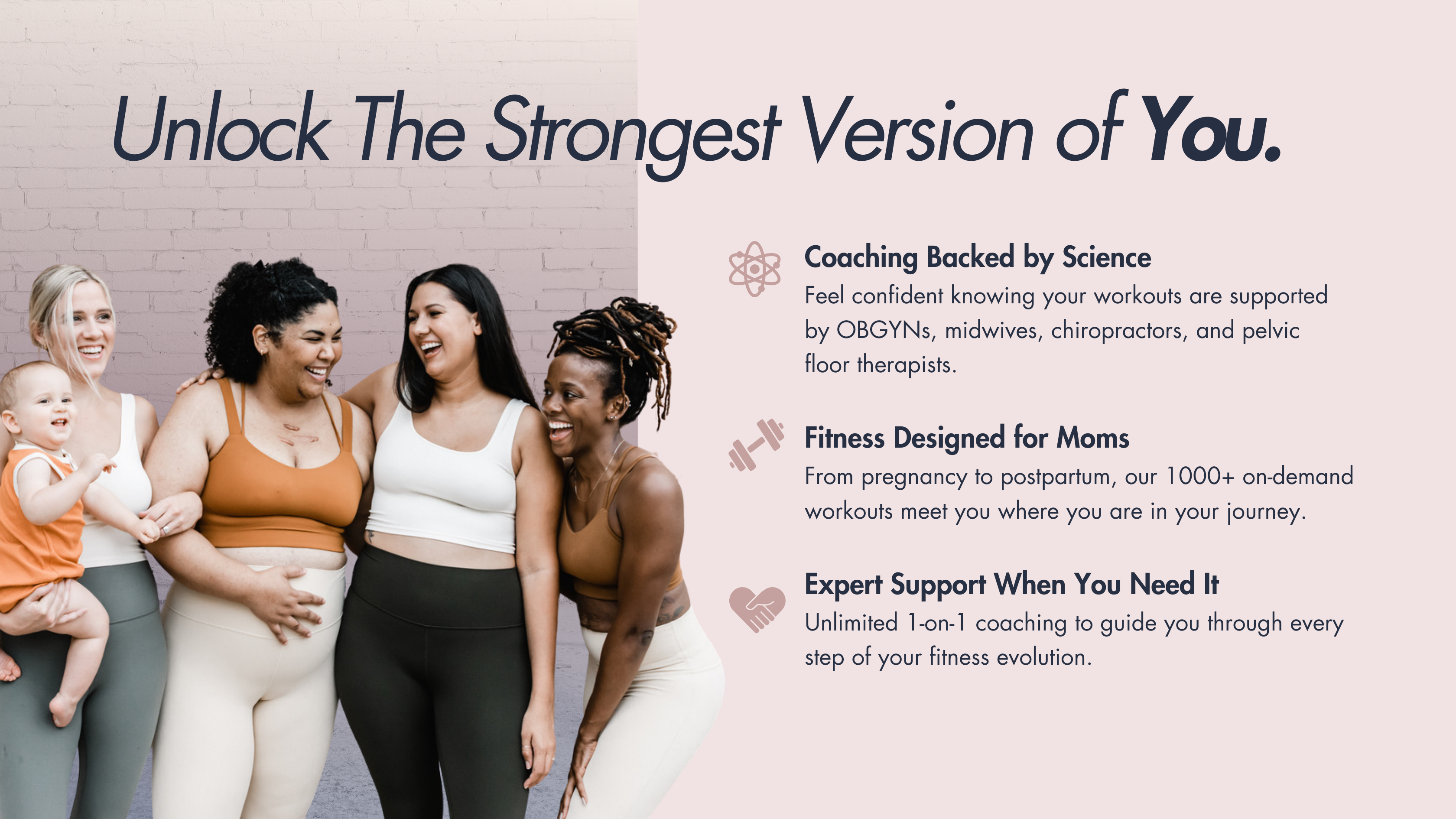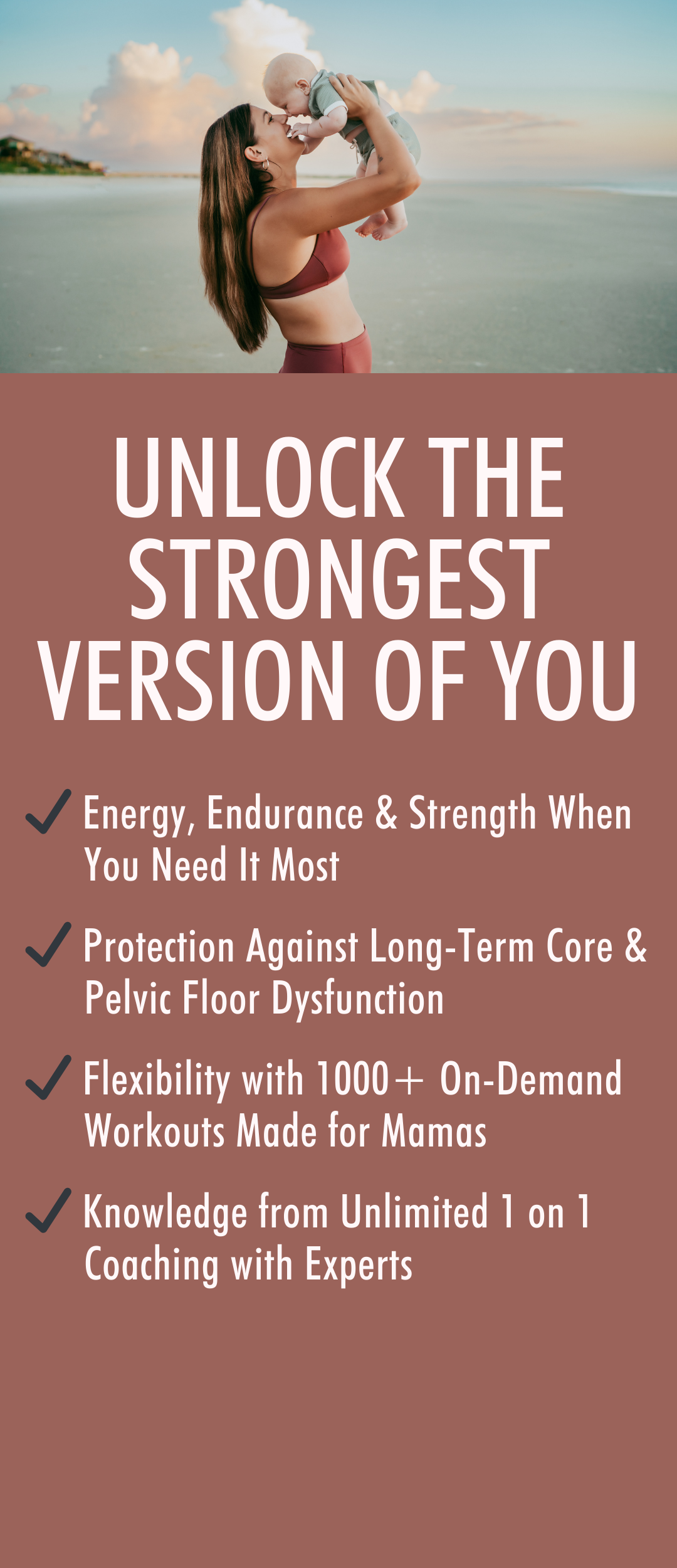Why You Don’t Need to Fear Diastasis Recti from Pregnancy
Why You Don’t Need to Fear Diastasis Recti from Pregnancy
As a pregnant mom, there’s nothing you want more than a healthy baby and a successful pregnancy.
Naturally, this makes it easy to panic about everything that could go wrong in the next nine months.
One of the most commonly feared complications in pregnancy is called diastasis recti. This involves the separation of the abdominal muscles, which can persist after pregnancy and cause discomfort.
But the main reason people fear diastasis recti is due to a lack of understanding of the condition.
Abdominal separation is a perfectly natural result of pregnancy.
While it can create further complications, it doesn’t always. If you feel or see separation during pregnancy, this doesn’t mean you’ll struggle to close your gap in postpartum.
Let’s explore all the reasons why you don’t have to fear diastasis recti from pregnancy.
Diastasis Recti vs. Injury-Based Diastasis Recti
At Studio Bloom, we like to differentiate between functional diastasis recti and injury-based diastasis recti.
Functional Diastasis Recti — Even before pregnancy, you’re always going to experience some level of separation between your abdominal muscles. This separation is designed to grow wider during pregnancy to accommodate your baby. It’s a natural and beautiful thing. As it widens, you may notice this separation through doming or coning when you perform a “crunch” movement.
Injury-Based Diastasis Recti — When natural diastasis recti occurs, the connective tissue between your abdominal muscles grows. This connective tissue is called the linea alba, and it’s delicate. The wrong exercises or daily movements can irritate it and eventually lead to an injury.
The good news is, you can strengthen your core and practice intentional movement in any stage of pregnancy and motherhood. Having the right tools allows you to either prevent diastasis recti injury altogether or close the gap once it’s formed.
Removing the Fear of Diastasis Recti After Pregnancy
With the right tools, diastasis recti is both easy to prevent and easy to heal. Here are the biggest reasons you shouldn’t fear diastasis recti from pregnancy — plus some of our top tips for supporting your body through it:
-
Separation Is Typically Wider at Your Belly Button
Is your separation more noticeable at your belly button? This is expected due to the naval being on top of the connective tissue (or linea alba). It’s natural and doesn’t mean you have a severe diastasis recti injury.
-
You Don’t Need to Close Diastasis Recti Completely
Some level of separation is normal, and everyone has connective tissue between their ab muscles. So don’t make it your goal to close your separation completely (this isn’t possible). Instead, aim to restore function and awareness to your core.
You want to perform a self-check to see how wide and deep your separation is. Then, bring your diastasis recti back to a normal state through everyday movement, breathwork, and exercise.
-
You Should Always Continue Exercising During Pregnancy
Do you feel like you’ve run out of options for pregnancy exercises? It’s common to learn what not to do when preventing diastasis recti. But few experts educate you about modifications and exercises that keep you active.
Let’s set the record straight: you never have to stop exercising during pregnancy.
Exercising is one of the best things you can do to prepare your body for the demands of labor and postpartum. But you will need to make some changes — namely, building awareness and engagement in your core. Properly engaging your core allows you to regain freedom over your exercise routine while protecting the delicate connective tissue between your abs.
Don’t let the fear of diastasis recti force you to quit exercising. Instead, learn to empower your core with modified techniques that build strength and stamina.
-
You Can Start Healing Diastasis Recti Immediately After Pregnancy
Many women struggle to feel and connect with their core after pregnancy. Rebuilding this awareness is a key factor in healing diastasis recti — and you can start from the comfort of your bed. We recommend beginning safe exercises and breathwork immediately after birth (even one or two days postpartum).
-
You Can Heal Diastasis Recti Years After Pregnancy
It doesn’t matter how long you’ve lived with abdominal separation, there’s always hope for recovery. At Studio Bloom, we work with women who are many months (and even years) postpartum. The beautiful thing is, your body can survive with abdominal separation if your linea alba doesn’t know how to heal. It’s just not optimal.
If you’re worried that long-term diastasis recti means you need extreme interventions (like surgery), we want to encourage you that this isn’t always the case. Start by giving your core the tools it needs to heal (breathwork, awareness, and proper engagement).
How to Know If You Have Injury-Based Diastasis Recti
You may notice abdominal separation after pregnancy, but this doesn’t mean you have injury-based diastasis recti. It all depends on the integrity of your connective tissue. If your connective tissue is strong, it should close naturally over time.
We characterize injury-based diastasis recti by the depth of your gap and how long it persists. If your gap is still present eight weeks after pregnancy, then you may have some level of injury.
When to Take Action on Diastasis Recti After Pregnancy
While diastasis recti from pregnancy shouldn’t cause fear, it is important to address it. Injury-based separation can make it difficult to pick up your newborn and carry out daily tasks. Not to mention, it’s uncomfortable and may lead to back pain.
You can support your connective tissue anytime during pregnancy — with intentional daily movements and core-strengthening exercises. You can also begin a safe diastasis recti exercise program immediately after pregnancy (even a few days postpartum).
If your abdominal gap persists more than eight weeks after pregnancy, then it’s time to seek out diastasis recti exercises and visit a physical therapist.
The Bottom Line: This Is Your Opportunity to Build Your Core Back Stronger Than Ever Before
Yes, pregnancy will change the way you exercise.
It will change the way you engage with and reconnect with your core.
But it will not change what you’re capable of.
The women who complete our Studio Bloom core program often feel stronger after pregnancy than they ever did before. And it’s not a coincidence. This happens because of the intense focus on core awareness and intentional movement.
And it can happen for you, too.
Our signature program The Core Lab has all the tools you need to reconnect with your core after pregnancy. It’s made to be done at home with your babies in twenty minutes a day or less.
Experience the Core Lab





